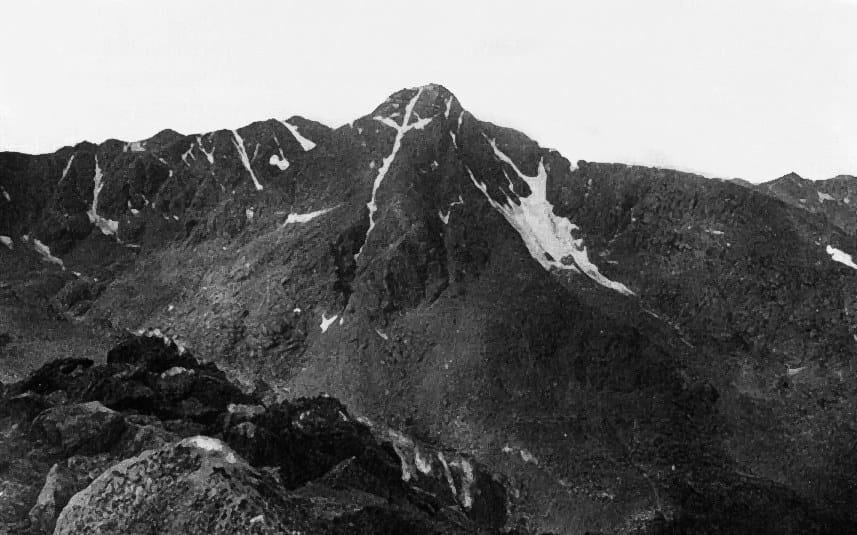Poetry Pie (Apr. 13)

Your weekly slice of Poetry
> Donne
> Longfellow
> Tennyson
The period of time approaching Easter is known as Lent, a time when the Church focuses on the sufferings of Christ leading up to his crucifixion. It is something like a preparatory time for the joys to come on Resurrection Sunday, much like how Advent is a time of darkened waiting for the hope that comes on Christmas. During this time, our church has experienced more doses of unexpected loss and death. The death that Christ was facing is not something that we've had to imagine or conjure up in our minds: it has been walking among us in a very tangible way.
Anyone that has spent much time reading the poetry of history has noted how many of the great poems are somberly related to death. My poetry students note this whenever we read such a poem, trying to cut the tension with a quip about how depressed the old poets must have been. It's not an improper observation to make, however. Why is there so much poetry on guilt, lament, grief and sorrow?
Perhaps it is those moments of life that drive the poet to their pen the most. These are times when reality has suddenly become too much. Poetry becomes a means to process, a means to provide a snapshot in time for what has happened. Time heals, and we begin (ever slowly) to forget the grief we had for the person we lost. This, in turn, brings a guilt for how we've had to move on, a feeling that we've betrayed the one that we still love. But the poem never forgets.
This week's edition of Poetry Pie offers poems that are related to death. Death of a spouse, death of a child, and even the death of oneself. As you read, notice how the poet frames the grief and what their conclusions are (if there are any).
Hymn to God, My God, in My Sickness
John Donne (1572—1631)
This poem was evidently written when Donne believed that he would shortly die. As he often does, Donne makes strikingly unique images and metaphors, likening himself (spread on a table before doctors) to a map, spread on the table before cosmographers (i.e. cartographers). Notice the geography imagery used throughout the poem: the west (sunset) is death and the east (sunrise) is life/resurrection. No true home exists for him in this world. The place of Paradise and Golgotha (Christ's Cross) are located within himself.
In all this, he does not fear death. "What shall my west hurt me?" He entrusts himself to Christ, whose blood embraces his soul, and whose purple garments wrap him up. He closes then with a phrase that I did not at first understand.
Therefore that he may raise, the Lord throws down.
God, in his sovereignty, allows hardship and sorrow. Yet he does this for the final purposes of building up. This is not a new doctrine, but found in many Biblical passages, such as Job 5:18 (and others).
For he wounds, but he binds up;
he shatters, but his hands heal.
Note on phase - "Per fretum febris" (Latin) : "through the strait of fever."
The Cross of Snow
Henry Wadsworth Longfellow (1807—1882)
As the story goes, this poem was written years after his wife's death, inspired by a photo of the "Mount of the Holy Cross" in Colorado. This mountain appears to be bearing a cross made out of snow, carved into its side by ravines. The following photo is likely what he saw.

The poem itself is a sonnet with a 4-4-3-3 structure. The first octet (8 lines) expresses his remembrance of his wife who had died eighteen years ago. The sestet (6 lines) then switches to this mountain that bears this cross. He is like this mountain, enduring the cross of sorrow for his lost wife, a sorrow that has not lessened since the day that he lost her. Some sorrows never depart.
On His Stillborn Son
Alfred, Lord Tennyson (1809-1892)
I first read this poem in the Everyman's Library Pocket Poets edition of Tennyson poetry, which is what is linked above. I have not found any other sources of the poem online, besides references to the fact that it likely came from a letter that he had written and never formally published.
This poem is profoundly beautiful in its grief. He laments the loss of his son, who, though dead, looks noble and bold. He likens him to a little warrior, who fought and lost in his "battle to be born." This is the poem that inspired me to write the following poem after we lost our own child. Though this boy made virtually no impact on the world, he lives on and is remembered through his father's poetry.
The poem is written in a mix of tetrameter (4 feet) and pentameter (5 feet) lines. It is rhymed in an irregular manner, starting ABAB and ending ABACCB. In the center, however, there are two lines that rhyme back-to-back (a couplet), which magnifies their effect and makes them very vivid.
But some brute force of Nature had prevailed
And the little warrior failed.
The fact that the second line here is shortened also heightens the effect, giving us the tangible feeling of something that is sadly cut too short. This line made a deep impression on me years ago, which is why I recalled it when I began to write the next poem.
Myosotis: Forget Me Not
Abram Newcomer
This poem was written a few weeks after my wife passed our third child due to a miscarriage. It is structured as a chiasm, which is hinted at by the first and last lines being almost identical. The first half focuses on the life of the child, while the second half on its death. And, as with all chiasms, the climax/conclusion is found in the center, which, in this case, is the acknowledgement of the Providence of God. Patrons can read more about this poem in my Poet's Notes.
We never got to see our child. But, in many ways, this poem gives us something tangible to remember it by. It was God's plan to make our child, and it was his plan to take this child back. To him be the glory.
Reading tragic poems can be an interesting activity. Do we read them to make ourselves sad? Or is there something deep in the human spirit that resonates with the grief of another human? For the Christian, we can find Christ in whatever picture of sorrow we find. He truly was the Man of Sorrows, who took on our pain and grief so that our griefs could be only temporary. And because of this, we can sympathize with anyone walking through tragedy, for our Lord offers a lasting hope.

Discussion